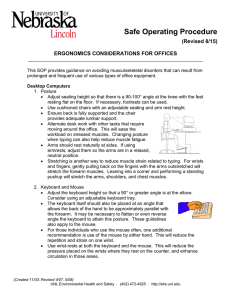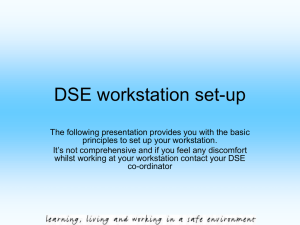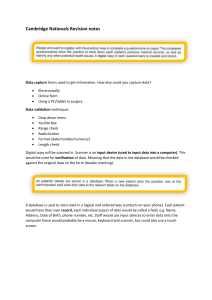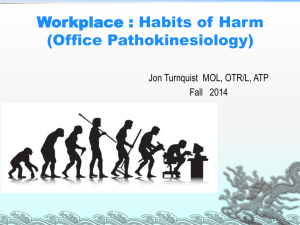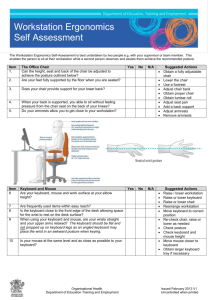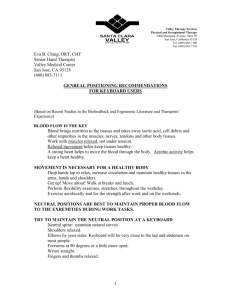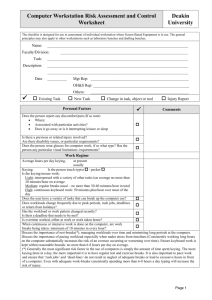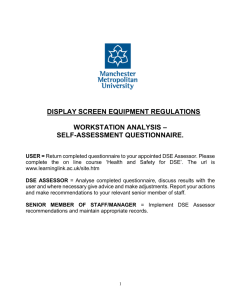Laptop Safety Leaflet May 2015 Laptop safety leaflet
advertisement
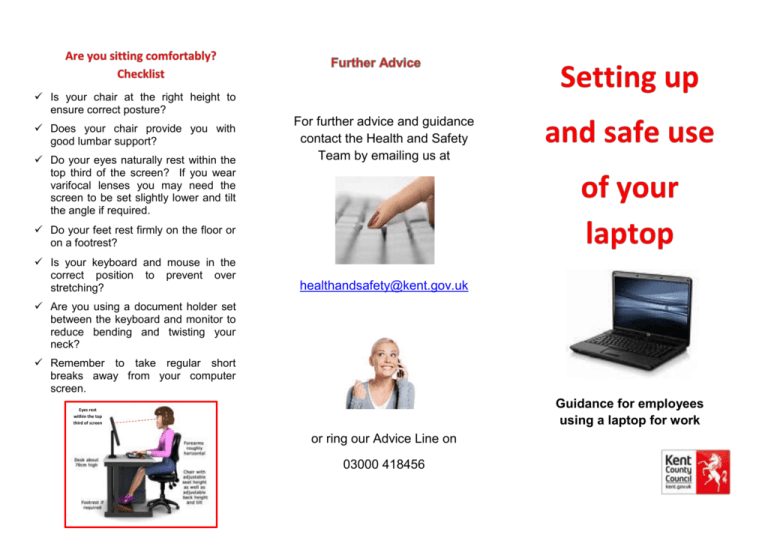
Is your chair at the right height to ensure correct posture? Does your chair provide you with good lumbar support? Do your eyes naturally rest within the top third of the screen? If you wear varifocal lenses you may need the screen to be set slightly lower and tilt the angle if required. For further advice and guidance contact the Health and Safety Team by emailing us at Do your feet rest firmly on the floor or on a footrest? Is your keyboard and mouse in the correct position to prevent over stretching? healthandsafety@kent.gov.uk Are you using a document holder set between the keyboard and monitor to reduce bending and twisting your neck? Remember to take regular short breaks away from your computer screen. Guidance for employees using a laptop for work Eyes rest within the top third of screen or ring our Advice Line on 03000 418456 Many of KCC staff work flexibly, meaning their desk top computers have been replaced with laptops and docking stations; allowing them to work from any office across the county. However in some cases a docking station is not always available and staff work directly from laptops. The following are examples of the poor design features of a laptop: Lack of keyboard separation and screen Difficulty maintaining working posture the correct They can be used in poorly suited environments and locations such as vehicles or on a coffee table for example. Working for a short period of time directly from your laptop is unlikely to cause you problems but for longer periods the neck, shoulders and back may be affected. Position the laptop on the desk in front of you so that you can see the screen without bending your neck. This can be achieved by elevating the laptop off the desk surface using a monitor riser or laptop stand. Ensure your laptop is placed at approximately arms length (60cm) from you, with your natural eye-line resting within the top third of the screen. Always use a separate keyboard and mouse, as shown in the picture and connect to the USB ports in your laptop. Wherever you are sitting, your chair must be at the correct height ensuring your elbows are level with the top of the desk and at right angles to the floor. If you are at home and sitting on a dining room chair, you may need to sit on a cushion to achieve this position. If you are carrying your laptop, keyboard and mouse with you then consider using a backpack to evenly distribute the load or use a laptop trolley. Mouse – hold the mouse gently to move it over the desk or mouse mat. Keep the mouse close to you and keep your movements small to avoid overstretching the arm and shoulder. Mouse movements should be made using the elbow as the pivot point, not the wrist. Keyboard – When using the keyboard the wrist should be free of surface pressure contact. If you wish to use a gel wrist rest in front of the keyboard, ensure you rest gently without adding pressure to the soft tissue of the wrist. Putting too much pressure to the wrist may cause Carpel Tunnel Syndrome. Aches and Pains – If you are experiencing aches and pains, alert your manager. A Display Screen Equipment self-assessment must be carried out (see link below) and where difficulties have been identified, contact the Health and Safety Team (details on the back page), who will be able to assess your need for different types of equipment to aid your comfort. DSE-Assessment Form




